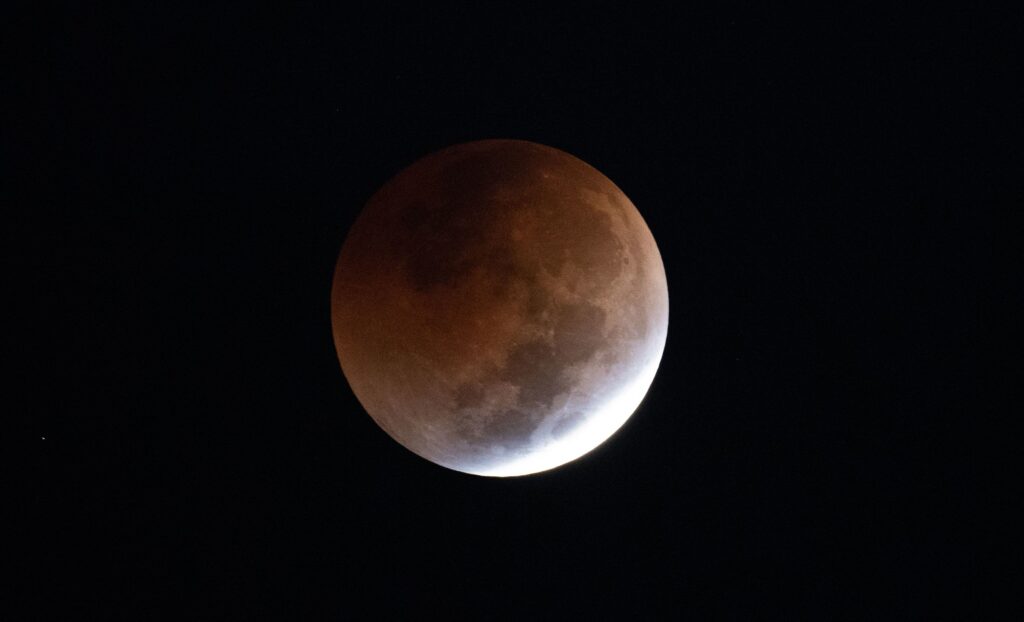Sky-gazers across the Western Hemisphere will be in for a celestial treat this week when the full moon appears to turn crimson during a total lunar eclipse.
The eclipse will be visible in western African and western Europe, the Americas, eastern Australia, New Zealand, northern Japan and eastern Russia Thursday evening and Friday morning, depending on where you live, according to EarthSky. Check Time and Date’s website to see exactly when the eclipse will be visible over your area, weather permitting.
A lunar eclipse occurs when Earth is between the sun and moon and the three celestial objects line up in a nearly perfect row, with Earth in the middle, so that the moon passes into our planet’s shadow. This alignment of bodies in space is called syzygy.
When the moon is within the darkest part of Earth’s shadow, called the umbra, it takes on a dramatic reddish hue, which has led to the nickname “blood moon” for a lunar eclipse, according to NASA. That shadow isn’t perfect, so faint sunbeams sneak around the shadow’s edges on all sides in the colors of a sunset, bathing the moon in brilliant, warm hues.
The peak of the total eclipse will begin at 2:26 a.m. ET Friday and last for about an hour, but there will be plenty of excitement before and after.
“With March being a pretty typical month for spring showers, there’s roughly a 50/50 chance it’ll be cloudy, so keep a close eye on the weather forecast leading up to the eclipse,” said Dr. Renee Weber, chief scientist at NASA’s Marshall Space Flight Center in Huntsville, Alabama, in a statement. “That totality will last for close to an hour, so even if it’s cloudy you may still be able to glimpse it if the clouds are scattered.”
While binoculars or telescopes will certainly enhance your viewing experience, no special equipment is needed to observe a lunar eclipse — and no special eclipse glasses are needed because looking at the full moon is not damaging to the eye.
Head to a spot that’s away from bright city lights and prepare for a special lunar sight that hasn’t been glimpsed since November 2022. Here’s everything you need to know.
What to expect during the eclipse
Unlike how the sun seems to disappear during the “totality” phase of a total solar eclipse, the moon will still be visible during the total lunar eclipse because sunlight passing through Earth’s atmosphere will reach the moon’s surface. This dim lighting will cause the moon to appear orange or red — and the more clouds or dust in our atmosphere, the redder the moon will appear, according to NASA.
While totality typically only lasts for a few minutes with a total solar eclipse, the moon during this week’s event will spend just over an hour in Earth’s shadow. But that’s not the start of the show. Like all eclipses, there are different phases to monitor during a lunar eclipse as it takes the moon about six hours to slowly make its way through Earth’s shadow and emerge on the other side.
First, the moon will enter Earth’s penumbra, or the outer part of its shadow, at 11:57 p.m. ET Thursday. While the moon may appear to slightly dim, it will be incredibly subtle, without any difference visible until around 12:30 a.m. ET Friday, according to Sky & Telescope.
The partial eclipse, during which it looks like a bite has been taken out of one side of the moon, will begin at 1:09 a.m. ET as the moon enters Earth’s umbra, or its inner shadow, according to NASA.



